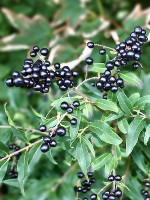Mon-Fri 9am - 5pm Mountain time
Wild Snowberry vs Wild Privet
Symphoricarpos spp.
Ligustrum vulgare
CUSTOM GROW
NOT AVAILABLE THIS SEASON - MIGHT RETURN
Wild Snowberry is a mix of Common Snowberry and Western Snowberry. Each shrub's size, flower, and berry colour may vary.
This plant is abundant across the prairies. It can be planted alone or as a hedge in small yards. This shrub's ornamental berries persist into winter. Wild Snowberry can be a natural habitat and food source for various animals.
Wild Privet is a fast growing ornamental shrub that is well suited for forming hedges and privacy screens. It will retain its leaves in warmer climates but drops them in colder areas. They have small white flowers, though the smell is often considered unpleasant. While the berries are inedible, they are a good food source for many bird species.
It is recommended to prune Wild Privet immediately after flowering, as it can readily self seed. It is deer and rabbit tolerant. It can grow in dry areas, on slopes, and withstand the wind making it well suited for many growing conditions.
Wild Snowberry Quick Facts
Wild Privet Quick Facts
Toxicity: If ingested, all parts of this plant will cause severe discomfort. Toxic to dogs, cats, and horses

